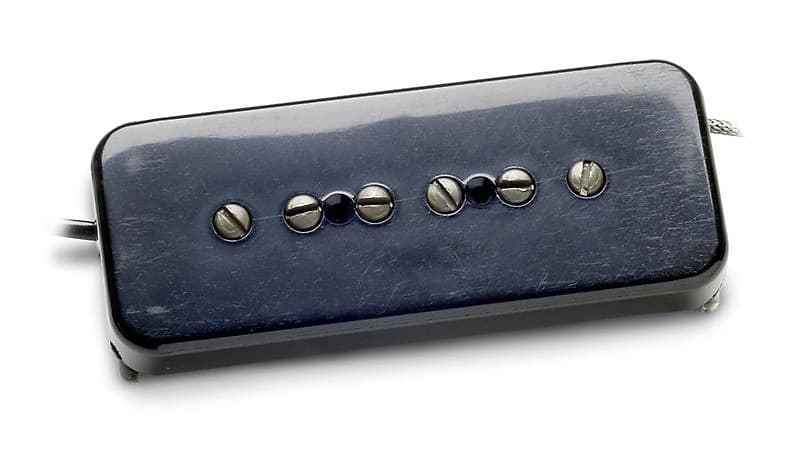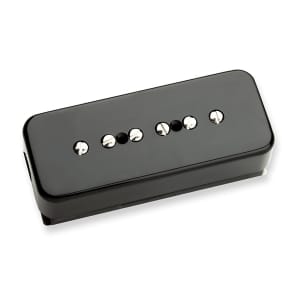Seymour Duncan Antiquity Series
Seymour Duncan Antiquity Series pickups have the look, feel and classic sound of vintage pickups. Hand crafted in Seymour Duncan's Santa Barbara custom shop using the same materials and techniques as the originals that have become so iconic, these "new" pickups are as close to the real thing as it gets. Each pickup is delicately handled to replicate the unmistakable tone and look of truly worn pickups- something that couldn't be done with a mass production process.
Seymour Duncan Antiquity P-90 Soap Bar Pickups
Imagine the pickups out of an old '52 gold top or a '59 ES-330. By removing the cover you'll find the same hand-fabricated bobbins, wire and "flatback" tape that was used in the originals. Two specially calibrated Dun-Aged™ Alnico II magnets are attached to a precision metal spacer which transfers the magnetic field to the strings via six fillister head pole pieces. The "soapbar" version is available with black or cream covers. All versions have an authoritative, vintage tone.
Specs: top pickup length: 3.158
top pickup width: 1.205
bottom plate length: 3.30
bottom plate width: 1.295
total pickup height: .640
total magnet height: .125
winding direction: top coming
pickup cover length: 3.365
pickup cover width: 1.365
pickup cover height: .360
magnet polarity: south
center to center: n/a
calibrated: yes
height adjustment: mounted to body
magnet pattern: 2 bar magnets
Part Number: 11034-62
Model: Antiquity P90 - Bridge
Pickup Type: P-90
Output: Vintage
Strings: 6
Position: Bridge
Cable: Single Conductor Braided Shield
Magnet: Alnico 2
DC Resistance: 8.6
Inductance: 7.41 henries
Q: 2.84


